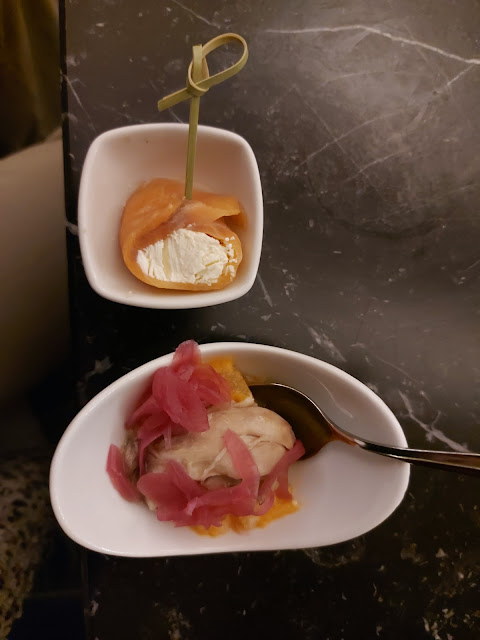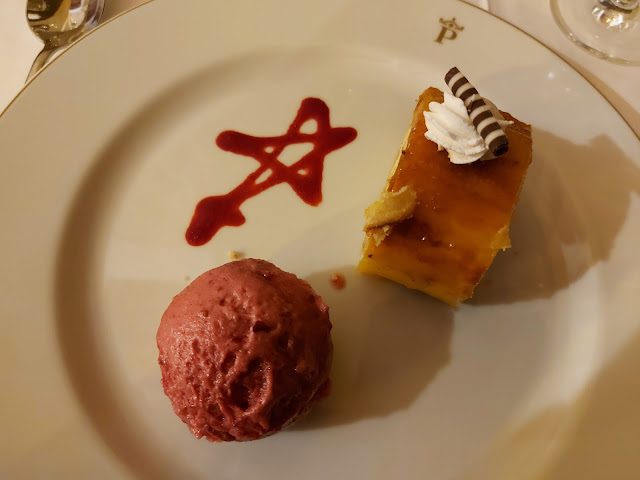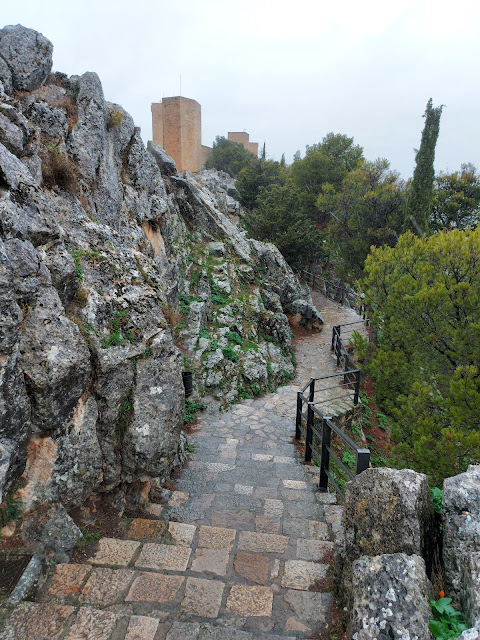 |
| Toledo was a large Roman city, the capital of the Visigothic kingdom, capital of Berber Muslim taifa, and a Castilian capital. |
 |
| The Monastery of San Juan de los Reyes was built by Isabella and Ferdinand. |
 |
| El Greco's The Burial of the Count of Orgaz is in the Church of Santo Tome. |
 |
| Many shops had this sign in them. Toledo could stand to lose a few souvenir shops... |
 |
| A marzipan recreation of one of Toldeo's gates |
 |
| Toledo Cathedral is the highlight of the city. |
 |
| It was built in the 13th century with additions in the 15th century. |
 |
| Alfonso VI of Castile conquered Toledo in 1085, which is often considered the start of the Reconquista. |
 |
| Toledo has great beer and tapas. |
 |
| The Puerta del Sol was built by the Knights Hospitaller. |
 |
| The Ermita Mezquita del Cristo de la Luz was built in 999. Once a mosque, it is now a church. |
 |
| Many buildings in Toledo are built in Mudejar style, or Christians using Moorish style. |
 |
| The stone city of Toledo looks great lit up at night. The Tagus River wraps around the city. |
 |
| Strong beard |
 |
| The El Greco Museum houses many of his works. El Greco was originally from Venetian Crete, and after failing to become Philip II's court painter, took up permanent residence in Toledo. |
 |
| One of my favorite El Greco paintings is of Toledo. |
 |
| The Museum of Visigothic Councils and Culture is small, but not to be missed. |
 |
| The museum is housed in the Church of San Roman, a 12th century Mudejar style church built over an old Visigothic/Roman building. |
 |
| Alfonso VIII was crowned King of Castile here in 1166. |
 |
| Its hard to find churches like this outside of Spain. |
 |
| The outside of the Church of San Roman. |
 |
| The Museum of Santa Cruz is housed in a 16th century hospital and contains many paintings by El Greco. |
 |
| A 3rd century Roman mosaic found near Toledo |
 |
| One of the best things I ate/drank in Spain was La Bomba with Tinto de Verano at El Trebol. |
 |
| The Alcazar of Toledo was originally a Roman palace built on top of by Charles V and Philip II. |
 |
| Ruins of the old fortress |
 |
| The Alcazar now houses an Army Museum. This is Boabdil, the last Nasrid king's, sword. |
 |
| A Spanish cavalry uniform from the early 1900s |
 |
| Jousting armor of the Duke of Alcala from the 16th century |
 |
| Westworld vibes |
 |
| The Alcazar became a Francoist shrine when the Nationalists withstood a Republican siege in it. Most of the Alcazar was destroyed in the fighting and had to be rebuilt after the Spanish Civil War. |
 |
| Old cannons |
 |
| Another of Boabdil's swords |
 |
| The flag of the Royal Guard from the 18th century could use some work. |
 |
| The Siege of the Alcazar lasted for two months and was a propaganda coup for Franco. |
 |
| The Castle of San Servando, once controlled by the Knights Templar, can be seen on the left. |
 |
| Brits probably aren't pleased when they see their captured flag from Menorca. |
 |
| The uniform of General Tomas de Zumalacarregui, a Basque Carlist general |
 |
| The flag of General Cabrera's Carlist battalion, from 1833 |
 |
| One of Charles V's tents |
 |
| A general's pistol from 1850 |
 |
| An artillery piece from the Philippines |
 |
| Franco's death mask |
 |
| Another great place we ate was Restaurante La Orza |
 |
| Partridge with rice |
 |
| You have to eat Marzipan while in Toledo. |


















